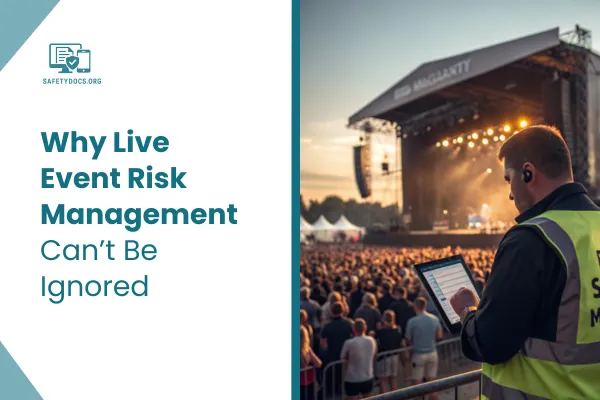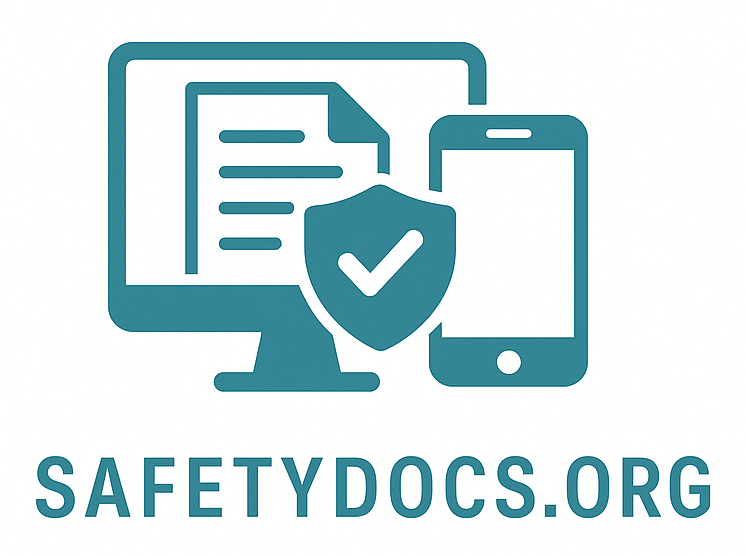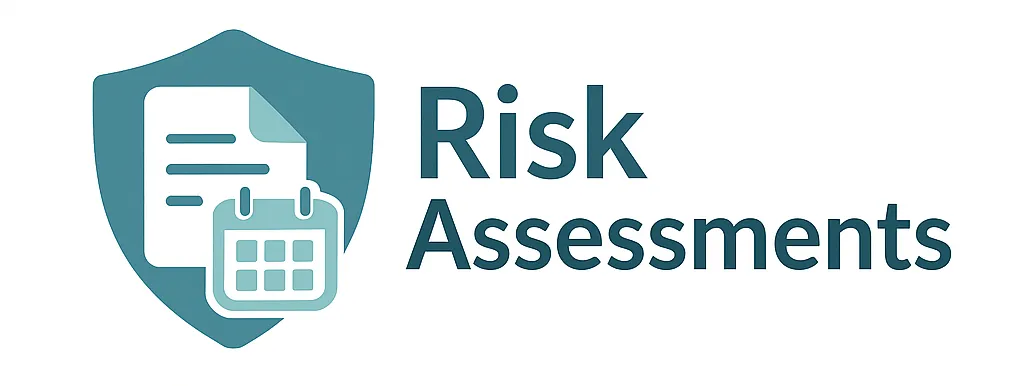
Live Event Risk Management Made Simple and Safe
Why Live Event Risk Management Can’t Be Ignored
Planning live events comes with high stakes. One mistake can lead to injury, chaos, or legal action. That’s why live event risk management isn’t optional—it’s essential. From music festivals to corporate expos, risk management is the silent backbone that keeps everything running safely behind the scenes.
Why Safety Should Start at the Planning Stage
Every successful event begins with a solid plan. Safety measures must be built into the event’s foundation, not tacked on at the last minute. A thorough risk assessment can identify problems early—before they spiral out of control.
This includes understanding the layout of the venue, expected crowd size, weather conditions, and the equipment you’ll be using. Skipping this step increases the risk of accidents, financial loss, or reputational damage that may be hard to recover from.
Common Risks at Live Events
No two events are the same, but many face similar hazards. Knowing what to expect is half the battle. Here are some common risk areas:
Overcrowding: Large crowds can lead to panic, pushing, and injury if not properly managed.
Weather issues: Rain, heat, wind, or sudden storms can cause equipment failure or make areas unsafe.
Technical glitches: Sound, light, or power failure can stop the event and cause confusion or accidents.
Health emergencies: Guests may faint, trip, or have allergic reactions. Quick response is critical.
Security threats: From petty theft to violent incidents, safety teams must stay alert.
Logistics breakdowns: Transport delays, food shortages, or toilet issues can lead to chaos.
When you’re aware of these risks, you can start building a plan to handle them calmly and professionally.
The Steps of a Solid Risk Management Plan
Building a proper plan doesn’t have to be complex, but it does require careful attention to detail. Here’s how to create a dependable system:
1. Identify the Risks
Walk through the event from start to finish. Think of what could go wrong at each step—before, during, and after. Include everything from fire hazards and power cuts to crowd bottlenecks and tripping hazards.
2. Evaluate the Likelihood and Impact
Not all risks are equal. Rate each one based on how likely it is and how severe the result could be. This helps you prioritize your actions. For example, a stage collapse is rare but devastating—so it requires extra focus.
3. Plan to Prevent or Respond
For each risk, decide how you’ll reduce the chance of it happening and what to do if it does. This might mean extra signage, barriers, a backup generator, or medical staff on site.
4. Assign Clear Roles
Make sure every action has a person responsible. In emergencies, confusion leads to delays. If someone is in charge of fire exits or crowd movement, they must know their job and have the tools to do it well.
5. Write It Down and Share It
A verbal plan is easy to forget. Document everything and go over it with your team before the event. Everyone should know the risks, their roles, and who to contact if something goes wrong.
Why Communication Is Just as Important as Planning
Even with a great plan, things fall apart if no one knows what’s going on. Communication is key. Staff and volunteers should be briefed before the event starts. Provide written guides, printed maps, and checklists.
Two-way radios or group messaging apps can help teams stay updated in real-time. Clear signage and announcements also keep guests informed and calm.
Staff Training: The Human Factor
People are your best line of defense. If they’re trained and confident, they’ll react faster and smarter. Basic training should include:
Emergency exits and crowd flow paths
First aid and who to contact
Handling lost children or missing persons
Dealing with aggressive behavior
Running a mock emergency drill before the event can help identify gaps in your plan and boost team confidence.
Don’t Overlook Insurance
Some organizers skip insurance to cut costs, but that’s a risky gamble. Event insurance protects against the unknown and keeps you from facing massive out-of-pocket costs. Key areas your insurance should cover include:
Public liability: In case someone is injured or property is damaged
Event cancellation: For weather or vendor no-shows
Property damage: Equipment, structures, or decorations
Staff cover: Volunteers, security, and performers
Insurance doesn’t fix a problem, but it prevents a bad situation from getting worse.
Choosing the Right Venue
The venue you choose can either support your safety plan or sabotage it. A site inspection is critical. Look for:
Clearly marked emergency exits
Fire extinguishers and sprinklers
Adequate lighting, especially for nighttime events
Accessible entrances for disabled guests
Room for emergency vehicles if needed
Work closely with venue staff to coordinate on responsibilities and emergency contacts.
Talk to Local Authorities in Advance
Police, fire departments, and medical services are there to help—but only if they’re prepared. Let them know about your event, including:
Event size and location
Entry and exit points
Crowd expectations
Schedule and duration
Points of contact
Sometimes, they may suggest having emergency services on standby. This added support can make a huge difference if things go wrong.
Lessons From Past Events
Looking at past incidents can teach powerful lessons. One major example is the 2010 Love Parade in Germany, where 21 people died due to poor crowd flow. Barriers blocked exit points, and lack of planning created a deadly stampede.
Another case is the 2021 Astroworld Festival in Houston. Crowd surges caused multiple deaths. Investigations pointed to ignored warnings and late emergency response. Both tragedies highlight how ignoring even one part of live event risk management can end in disaster.
Reputation Is Fragile
A single mishap can do more than ruin your event—it can harm your brand long-term. Videos, reviews, and tweets can spread fast. Once trust is lost, it’s hard to win back. Safety shows professionalism, and people remember how they felt at your event.
Good risk planning doesn’t just protect—it reassures. Guests feel safer. Staff work with confidence. Sponsors see a brand that’s serious and reliable.
New Trends Bring New Risks
Events today are more ambitious than ever. They use new tech, temporary structures, food trucks, and interactive installations. All of these introduce new safety questions:
Is your VR booth a tripping hazard?
Can that pop-up stage support the weight?
Do food vendors meet health standards?
Each addition to your event should be reviewed through a safety lens. Progress is good—but only when it's backed by proper planning.
Legal Issues Can’t Be Ignored
Local rules might require noise limits, safety signs, alcohol permits, or licensed security. Ignoring these can shut down your event or trigger hefty fines. In some cases, organizers have faced criminal charges after serious accidents.
Working with legal advisors who understand events can save you from trouble. Always get permits early and keep paperwork organized.
Vendor Coordination Can Make or Break Safety
Vendors—from food stalls to tech crews—play a direct role in event safety. If their setup is unstable, poorly wired, or blocks access points, it creates hazards. Part of good live event risk management is ensuring vendors follow safety rules just like your own team does.
Request insurance certificates from all vendors, assign set-up times to avoid congestion, and inspect their spaces before the event begins. Even small oversights like loose cables or improper food storage can lead to big issues. Coordination and oversight are key.
Managing Crowd Psychology
Crowd behavior can shift quickly based on emotions, noise, and space. Understanding basic crowd psychology helps prevent panic and maintain control. For example, narrow walkways and loud, unclear instructions can trigger stress or aggressive behavior.
Create open spaces, guide traffic with signs and barriers, and use calm, clear announcements to keep the mood steady. Trained staff should know how to spot early signs of unrest—like shouting, pushing, or clustering—and act before it spreads. Safety isn’t just physical—it’s emotional too.
FAQs
1. What are the most common safety risks at public events?
Overcrowding, weather changes, technical issues, and health emergencies are some of the most frequent risks that need proactive planning.
2. How can event organizers reduce crowd-related dangers?
Use barriers, clear signage, and trained staff to control flow and prevent dangerous build-ups in high-traffic zones.
3. Is insurance necessary for small events too?
Yes, even small gatherings can face accidents or cancellations, making insurance a smart safety net for organizers.
4. Who is responsible for enforcing the safety plan during an event?
A designated safety officer or team leader should oversee all procedures and respond quickly if issues arise.
5. How early should risk planning begin for an event?
Risk assessments and planning should start during the initial event concept phase—not after details are finalized.
Conclusion
There’s no shortcut to safety. Live event risk management is the only way to protect people, your brand, and your future. Every decision—from venue to volunteers—should be guided by the question: “What could go wrong, and how are we ready for it?” When risk is managed properly, everyone wins.
Let us help you prepare for safer, smarter events. Contact us today to find out how.

